Problems with the skin can cause a lot of trouble and discomfort. Peeling skin is one of the most common troubles encountered by many women, and sometimes men. Having found out the true reasons for what is happening, you can choose the right effective method to eliminate this cosmetic defect.
Why does my skin peel?
It has been found that dry skin flakes more often than other types. This is due to an insufficient supply of natural moisturizers - oily substances that are produced by the sebaceous glands.
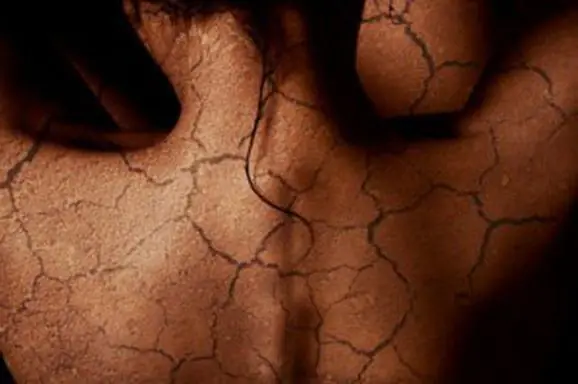
Peeling scales and a feeling of tight skin can be caused by the following reasons:
- Incorrectly selected products for cosmetic care and cleansing of the face and body.
- Allergic reaction to washing powder, fabric softener, dishwashing detergent, cosmetics.
- Taking baths or showers too often.
- Climatic conditions (high air temperature, wind, direct sunlight).
- Dry air in winter.
- Bad habits.
- Insufficient fluid intake.
- Consequences of taking medications.
- Dermatological diseases.
Men also often experience peeling skin on their body or face. The reason for this may be alcohol abuse, smoking addiction and poor diet. Sensitive skin types react to mechanical stress with the appearance of redness and the formation of scales, so rubbing and using harsh cleansers is not recommended.
Is peeling a sign of illness?
This symptom may indicate a developing skin disease. One of these ailments is psoriasis, the spots in which have a pink-red tint, are flaky and itchy. The reasons that trigger the process are currently unknown. The same symptoms include seborrheic and contact dermatitis, pityriasis rosea, lupus erythematosus, scarlet fever (infectious pathology), and fungal infections. Hereditary diseases in which scales form on the skin include ichthyosis. The irritated surface of the dermis does not tolerate the effects of detergents (shampoo, soap, gel), and the unpleasant symptoms intensify.
With a lack of vitamins A and B2, the skin on the forehead, nose and ears peels off greatly, and cracks may appear on the lips. During menopause, many women experience a change in the condition of their outer skin for the worse. This is how the body shows a lack of hormones, especially estrogen. Wrinkles, sagging appear, and skin elasticity is lost. To find out the causes of peeling, you must seek medical help. Specialists in this field are a dermatologist, an allergist, an infectious disease specialist, and a surgeon.
First signs of dry skin
Characteristic signs of dry skin type are:
- Constant feeling of tight skin.
- Matte shade.
- Thin skin.
- Frequent occurrence of redness.
- Itching.
- Peeling.

If your facial skin is dry and flaky, you need to contact a cosmetologist who will select a suitable product to restore water balance. This type of skin is prone to the early appearance of wrinkles, which are not so easy to get rid of, and rapid aging.
Dry skin (xeroderma) can be associated with metabolic disorders in the body and diseases of the thyroid gland. Dead particles, accumulating on the surface of the epidermis, begin to peel off. Dermatitis can cause itching, so first of all you should consult a dermatologist.
In severe cases, very dry skin begins to crack and ulcers appear. This is fraught with infectious contamination.
Peeling skin: treatment
Having found the root cause of xeroderma, you can begin to eliminate the symptoms. If the problem is insufficient hydration or rapid evaporation of moisture from the surface, it is necessary to select cosmetics with a high content of fatty components. Medications are used only on the recommendation of a doctor. Such products should contain hydrocortisone (0.5–2%) in the composition.
If the skin on the body is peeling, you need to change the gel and soap. They can give this effect in the first place. It is better to wash your face with clean water or a decoction of medicinal herbs. Cleansing lotions and tonics should not contain alcohol, which causes dryness and tightens the skin.
Proper care for dry skin
Cosmetologists recommend that people with dry skin take water treatments no more than 2 times a day. This will help the sebaceous glands work properly and produce the required amount of natural moisturizing substances. Dry skin “loves” slightly warm or cool water, but never hot. After washing, you need to gently blot the surface of the dermis with a soft towel. Rubbing will cause redness and irritation of the skin.

After taking a shower, always use moisturizing milk or cream. For very dry skin, you can try cocoa or coconut butter. Thanks to the components they contain, the epidermis receives nutrients, minerals and vitamins. All kinds of peelings, face and body scrubs should be used no more than once a week so as not to injure dry skin.
What can a cosmetologist offer?
Beauty salons offer the following procedures to eliminate dry skin:
- Biorevitalization – is currently the most popular way to saturate the skin with moisture. Using various techniques (reinforcement, micropapule), hyaluronic acid is introduced, which will start the process of natural collagen formation. The framework, created from hyaluronic acid, collagen and elastin, will retain moisture and help smooth out deep wrinkles.
- Iontophoresis – if dry skin is flaking, then this method can restore water balance and relieve discomfort. The procedure involves treating the skin on which the drug is applied with a low-voltage galvanic current. Active ions transmit a signal to the central nervous system, and the body begins to renew itself.
- Mesotherapy – carried out for various indications: acne, dehydrated skin, wrinkles, rosacea, etc. The drugs are administered by injection and needle-free method (pulse iontophoresis). The goal of the procedure is to increase the activity of fibroblasts. These cells are responsible for the production of elastin and collagen.
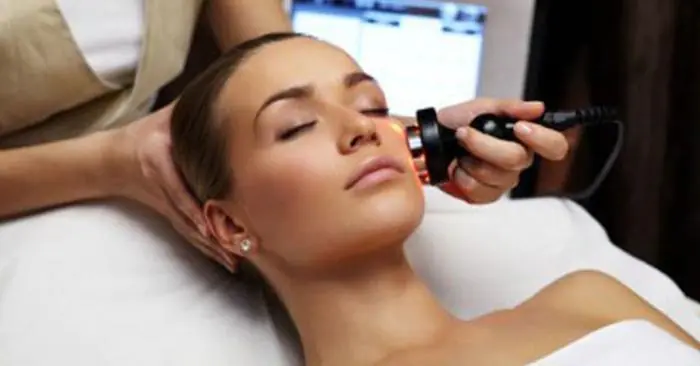
Salon procedures can only be performed by specialists with appropriate education (cosmetologists, dermatologists).
How to choose a moisturizer?
Very dry skin on the face and body needs constant and proper care with moisturizing cream, lotion, milk, and tonic. This will help protect the thin epidermis from adverse environmental influences - strong wind, cold air, ultraviolet radiation. Particular attention should be paid to the skin of the hands and face.
Oil-based products perfectly eliminate moisture deficiency. Grape seed oil, almond oil, and shea butter are applied to the face. For washing, it is advisable to use milk, for example, Lait Demaquillant Absolu (Vichy), Natura Siberica. Problem areas on the body where there is flaky skin can be lubricated with olive oil.
Among cosmetic preparations, it is better to give preference to brands that are presented in pharmacies: Vichy (Lipidiose Nutritive), Bioderma (Atoderm). Natural ingredients and proven action through research will help restore freshness, firmness and elasticity to the skin. The disadvantage of such products is their cost, which is much higher than those available in cosmetic stores. When buying a moisturizer, you need to pay attention to the ingredients. The one that contains hyaluronic acid and vitamin E is better suited for the skin. The price will depend on the manufacturer and the naturalness of the ingredients. Sometimes the product may be chosen incorrectly, so it is better to seek advice from a professional cosmetologist or dermatologist.
Facial skin is peeling: what to do at home?
At home, it is quite possible to prepare products that will moisturize dry skin no worse than expensive ready-made preparations. The advantages of folk recipes include the availability of the necessary ingredients, natural origin and confidence in the naturalness of the product.

The most popular homemade skin care products are masks. After the first use, the result will be visible if you take oatmeal (1 tablespoon) steamed with milk and add a spoonful of homemade cream to it. There are also options with honey, butter, and full-fat cottage cheese (with added milk).
A mask with tocopherol (vitamin E) is suitable for dry skin. The price of the solution in the pharmacy is 35-45 rubles. (for 20 ml). Melt cocoa butter (1 tbsp) in a water bath, add 1 tbsp. l. liquid vitamin E and the same amount of sea buckthorn fruit oil. Tocopherol also combines well with lanolin (1:2). The masks are kept on the face for no more than half an hour, after which they are washed off with warm water or using a damp sponge.
Flaky skin? Homemade cream to the rescue!
Vitamin E Recipe
- Brew chamomile (1 tbsp) with boiling water, leave and strain.
- Add half a teaspoon of glycerin to 2 tbsp. l. chamomile decoction.
- Combine the resulting mixture with camphor and castor oil (1 tsp each).
- Finally, add 10 drops of tocopherol solution.
This cream can be stored in the refrigerator for up to 5 days.
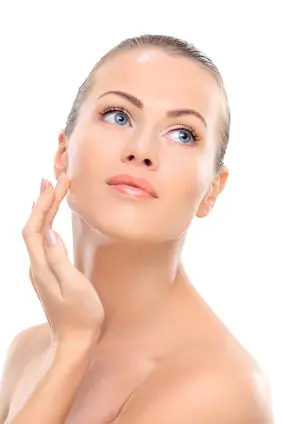
Recipe for deep hydration
- Mix the pulp of healing aloe (2 tbsp) with glycerin (0.5 tsp).
- Add a few drops of olive oil.
- Dilute the resulting composition with any essential oil (no more than 7 drops).
Beeswax Recipe
- Coconut oil (3 tbsp) is mixed with clean water (3 tbsp) and a teaspoon of almond oil.
- Beeswax (1 tsp) is melted in a water bath and mixed with the previous components.
- Then add olive oil (2 tablespoons) and half a spoon of borax. During cooking, the ingredients must be stirred constantly.
Nutrition and diet
Peeling skin indicates a lack of useful microelements, vitamins and fluids, which enter the body primarily with food. Therefore, your diet should contain as many healthy foods as possible. Vitamins E, A and B necessary for the epidermis are found in various vegetables and fruits. But you will have to give up fatty meats, lard, smoked meats, canned food, and fatty fermented milk products. In general, it is better to consume meat in minimal quantities, including chicken.

If your facial skin is dry and flaky, it may be lacking vitamin A. In this case, you need to increase the amount of carrots, apricots (dried apricots) and green vegetables in your daily diet. Natural vitamin E is found in nuts, liver, seeds, eggs (they can cause allergies, so you shouldn’t lean on them). A hypoallergenic diet should be followed if the cause of dryness, itching and flaking of the skin is a disease.
Prevention of dry skin of the face and body
By following some tips and recommendations, you can quickly get rid of problems with dry skin:
- Try to shower no more than 2 times a day.
- Replace soap with cream-based gel.
- Body moisturizers are best applied to damp, clean skin.
- Use a barrier cream if flaky skin appears in winter.
- During the heating season, it is necessary to humidify the air in the house using special devices.
- On hot, sunny days, apply cream with ultraviolet protection to the face.
The surface layer of the epidermis is constantly renewed: the stratum corneum is rejected and replaced by keratinocytes - new cells. Due to unfavorable environmental conditions: climate, allergies, fungal infection, interaction with toxic substances, lack of moisture, nutrients and vitamins, hereditary predisposition, the stratum corneum begins to be rejected intensively, while the formation of keratinocytes is also activated. As a result, peeling appears on the face - what to do and how to restore health and beauty to the skin becomes a particularly significant problem.

Causes of peeling skin
Sudden peeling on the face is a reason to think about it. This may be due to improper skin care or problems within the body.
- Lack of moisture. In 97% of cases, the skin begins to peel due to dehydration. Signs of a lack of fluid in the body also include thirst, dizziness, dry mouth, weakness, low blood pressure, nausea, and palpitations. Typically, such symptoms are caused by insufficient drinking, intense sweating, and the use of diuretic medications.
- Incorrect care. Peeling of the skin on the face, caused by improper care, most often occurs in people with sensitive skin types, which are characterized by an acute reaction to any external intervention.
- Incorrectly selected or low-quality cosmetics. Another reason why the skin on the face begins to peel off. This is more often observed in women, since it is the weaker sex who tend to get carried away with cosmetics.
- Unfavorable environment. These include temperature changes, exposure to direct sunlight on the skin, wind, and very dry air in office premises (especially in winter). In this case, the skin on the face peels off chronically, due to prolonged contact with the irritant, and in addition, dryness is observed. There may be mild redness, swelling, mild itching and burning, soreness, cracks, and thickening of the skin. Urticaria, rhinitis, asthma attacks, and conjunctivitis are not observed.
- Allergy. Redness and peeling can be caused by animal hair, pollen from flowering plants, and some medications. Problems with the skin stop if the irritant is removed.
- Diathesis. It develops as an allergic reaction, although experts do not consider it an allergy. Signs of diathesis can vary greatly, but in most cases there is dryness and swelling, the skin turns red, itches, and flakes. Particular discomfort is felt at night. Sometimes vesicles and papules appear on the face. Diathesis can be contact (for example, with the local use of inappropriate or low-quality cosmetics, ointments) and atopic, which is a manifestation of an allergy to something (wool, pollen, some products).
- Avitaminosis. Peeling on the face may be due to insufficient intake of vitamins and minerals from food. As a rule, a lack of vitamins A and group B affects the condition of the skin in a similar way.

Insufficient consumption of keratin (vitamin A) is also manifested by night blindness, inflammation of the cornea and eye mucosa, bronchitis, urethritis and inflammatory processes in the intestinal mucosa.
With a lack of vitamin B2, the mucous membranes of the eyes, the skin between the nose and upper lip, and on the eyelids become inflamed, ulcers appear in the corners of the mouth, cracks on the lips, muscle weakness, and anemia.
Vitamin B3 deficiency is manifested by general weakness, diarrhea, paralysis, in addition, hair loss, tongue inflammation, hallucinations, delirium, and insomnia are possible.
A lack of vitamin B6 is characterized by the development of fungal inflammations on the skin, anemia, insomnia, irritability, weakness and inflammatory processes on the mucous membranes.
Drowsiness, malaise, muscle pain, depression, increased fatigue and decreased blood pressure are characteristic signs of vitamin B7 deficiency.
Peeling of facial skin can also be associated with certain diseases:
- Ichthyosis. Signs of the disease are very dry, rough and rough skin due to a significant increase in the number of horn cells. Most often, due to ichthyosis, the skin on the face peels off in young children (1-4 years) and adolescents.
- Seborrheic dermatitis. The disease manifests itself in the form of itching, redness and flaking of the skin, affecting exclusively areas with a large number of sebaceous glands and hair. Develops as a result of decreased immunity, heavy sweating, stress, poor hygiene, alcohol consumption, and an unbalanced diet.
- Psoriasis. Red-pink spots in psoriasis flake and itch, rarely appear on the face (they can be seen on the forehead, temples, neck), more often they are localized on the body. Psoriasis is characterized by periods of remission and exacerbation. The disease is provoked by drinking alcohol, hypothermia, prolonged exposure to sunlight, stress, and taking medications.
In what cases is it necessary to consult a doctor?
If the skin on your face is peeling, this is not always a consequence of dehydration and a harmless lack of vitamins. In some cases, such skin problems indicate diseases that may worsen over time.

Signs that you need to see a doctor:
- dry, flaky skin that itches a lot and has a burning sensation;
- erosions, spots, ulcers, ulcers, cracks appeared on the face;
- peeling is accompanied by dizziness, diarrhea, joint pain, headache, hallucinations, insomnia, paralysis;
- flaky spots differ from the rest of the skin in color;
- the skin is bright red and swollen;
- the skin peels in the nasolabial folds, on the eyebrows, around the eyelashes, on the head.
How to get rid of peeling
Peeling skin on the face can be treated, and creams containing no more than 0.5% hydrocortisone will be especially effective. Apply the product once a day to problem areas for 14 days. It is prohibited to use such creams for a longer period of time, since these are not ordinary cosmetics, but medicine.
What to do if the peeling is very strong and ordinary moisturizing creams cannot cope with it? In this case, the use of drugs that contain dexapanthenol is effective. These are, for example, “Panthenol” in the form of a cream or spray, prescribed by doctors for burns, “Bepanten” (can be used as a means of preventing peeling in winter).
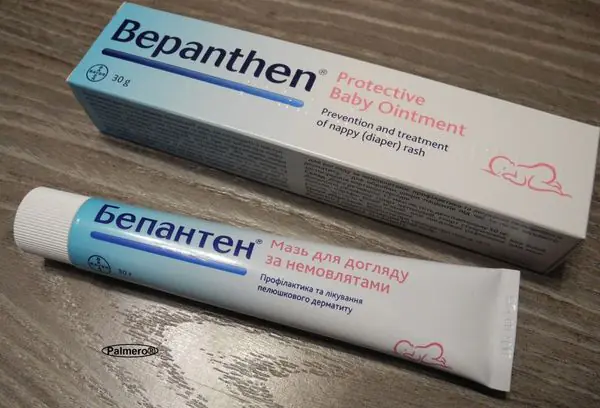
If peeling and irritation on the skin is not caused by an illness, then dealing with them on your own will not be difficult. You need to act according to the following scheme:
- remove dead cells from the surface using a scrub (it should be soft, without abrasive particles that can injure the skin);
Advice
You can make an excellent scrub with your own hands. Pour boiling water over oatmeal and leave for 20 minutes, add egg white and apply to face. Massage for 2-3 minutes, then rinse. You can use coffee grounds, fresh apple and cucumber slices, and watermelon pulp as a scrub.
- make a nourishing mask, it can be purchased or made from products that are always on hand (sour cream, cottage cheese, egg yolks, cream, boiled potatoes fight peeling);
- leave the mask on for 20 minutes, then rinse with water;
- Lubricate your skin with moisturizer.
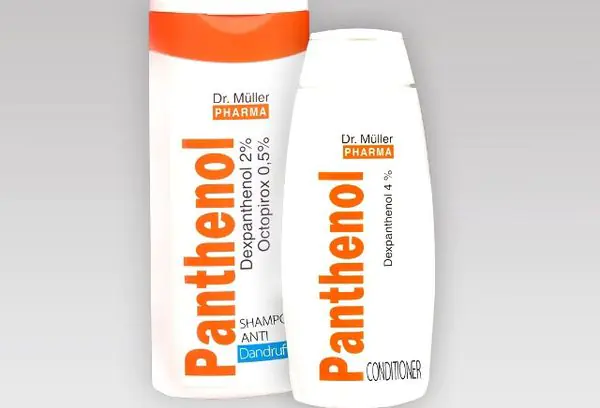
Anti-flaking masks
In winter, masks are a must. Particularly useful are compositions with yolk, vitamins, cottage cheese, cream:
- mix 0.5 tablespoon of honey with 2 yolks and 0.5 tablespoon of vegetable oil, spread on the face every 5 minutes (no need to wash off the previous layer), leave for 20 minutes and rinse with a cotton pad soaked in a decoction of linden flowers;
- lightly heat vegetable oil (olive, wheat germ, almond or flaxseed) and lubricate your face with it, after 30 minutes rinse with warm water;
- mix the egg yolk with 1 teaspoon of chopped oatmeal and 1 tbsp. spoon of vegetable oil, apply to face and rinse after 15 minutes with warm water;
- Take cottage cheese, cream, milk and sour cream in equal parts, mix and apply to your face, after 15 minutes wash with warm water.
A balanced diet will help you overcome peeling and irritation on the skin. The table must have fresh vegetables and fruits, seafood, fish, dairy products, and nuts. In autumn, winter and spring, it is advisable to take special vitamin and mineral complexes.
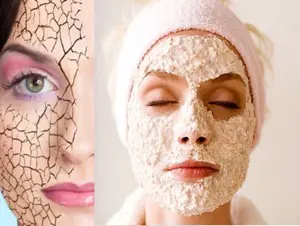
Everyone can face a dermatological problem where the skin peels. This causes discomfort because it feels itchy. This phenomenon may be caused by a lack of vitamins, some disease or improper care. Therefore, before eliminating peeling of the cheeks, chin or forehead, it is very important to find out the reason for the body’s reaction. Otherwise the problem will repeat again.
Possible reasons
Dermatological the problem is a lot of trouble. Sometimes the skin on the cheeks is red and peels. Sometimes the roughness is not visually noticeable, but it can be determined by touch. In both cases, it is necessary to take measures to restore the epidermis.
You can tell whether the skin is healthy or not if you touch it with your fingers. In the absence of unpleasant phenomena, the surface of the dermis is smooth and velvety. If there are irregularities, bumps, roughness, or the skin begins to peel off, this indicates a problem that needs to be dealt with.
Skin diseases
A visit to a specialist will help you find out why the skin on your cheeks is peeling. He is able to determine whether there are the following dermatological diseases:
- Ichthyosis.
- Allergic reaction of the diathesis type.
- Psoriasis.
- Seborrheic dermatitis.

The causes of ichthyosis are still unknown. There are suggestions that the disease is inherited and through contact with a sick person. As a rule, ichthyosis first affects the arms, feet or legs, and then may appear on the face. In this case, the skin on the forehead, chin, and cheeks turns red and peels, and may have a grayish-dirty tint.
Dry skin on the cheeks of an adult is due to allergies. With this phenomenon, the cheeks peel and become red. The top layer of the epidermis dies.
With psoriasis, flaky spots appear on the skin, which are difficult to hide with any means.
The symptoms of seborrheic dermatitis are similar to those of psoriasis, but the peeling may be more severe. The location of irritation is the area around the nose.
This does not end the list of dermatological diseases that cause flaking of the skin, which only a doctor can help identify. Based on the test results, the dermatologist will make an accurate diagnosis and prescribe treatment.
Hormonal disbalance
When a person goes through certain stages of life, he hormonal levels can change. For example, this is puberty, pregnancy, lactation and menopause. At each of these stages, a change in hormonal levels occurs, which can affect the dermis.
The teenage period is characterized by hormonal imbalance, a surge of testosterone and progesterone. This can lead to dryness and flaking of the dermis. As a rule, this goes away with age, but there are times when a visit to an endocrinologist is indispensable.
Women's skin may become dry and flaky during pregnancy and breastfeeding. Usually the problem disappears after childbirth and after completion of lactation, but during the period of hormonal changes it is recommended to moisturize the skin well.
During menopause, women also face dermatological problems. Peeling of the dermis occurs due to a lack of estrogens, which are responsible for the regeneration of the skin. A gynecologist-endocrinologist will help solve the problem and prescribe hormonal therapy if there are no contraindications.
You should not try to cope with peeling of the dermis caused by hormonal imbalance, since self-treatment can be harmful. Therefore, you cannot do without consulting a specialist.
Lifestyle and ecology
Peeling skin on the cheeks can occur due to poor nutrition, bad habits and environmental factors:
- Allergy due to abuse of fried, fatty, salty and sweet foods.
- Dryness and dehydration of the dermis due to lack of water in the body. It is worth remembering that in addition to tea and coffee, you need to drink at least 1.5 liters of clean water per day.
- It is very important to get enough sleep and walk in the fresh air as much as possible. Prolonged stay in a stuffy room negatively affects the epidermis.
- Drinking alcohol and smoking have a destructive effect on the cells of the body. Intoxication causes thinning of the epidermis, which causes sagging, wrinkles and flaking.
- Unfavorable environmental factors, such as emissions of heavy metals into the atmosphere or chlorinated water, slow down growth and destroy healthy epidermal cells.
- In autumn and winter, special care for the skin of the face and lips is required. This will help avoid chapping and peeling.
- The sun's ultraviolet rays have a detrimental effect on the dermis. In hot weather, cell dehydration occurs. To prevent the upper layer of the epidermis from drying out, it is recommended to use sunscreen in spring and summer, avoid prolonged exposure to the sun, and moisturize the skin.
- If the body does not receive enough vitamins, metabolic disorders occur, resulting in dryness and flaking on the face and other parts of the body. Vitamins A and B2 are especially important for the dermis.
Improper care

Very often, severe peeling of the skin is caused by improper care. The problem arises when using some means:
- It is not recommended to use lotions that contain alcohol. It is especially undesirable to do this if you have dry skin.
- For washing, it is better to choose soap that does not contain alkali, fragrances or fragrances. Such chemistry causes dryness, dehydration and allergic dermatitis.
- The cream should be chosen according to your skin type and age.
Solving the problem yourself
Help the problem skin can be done at home using special cosmetics:
- Natural oils, such as olive, orange, coconut or almond, are an excellent remedy for peeling the epidermis.
- You can make face masks with the addition of essential oils.
- Hot water and soap harms the dermis. It is better to use gel or foam for washing.
- It is recommended to take multivitamins; the presence of vitamins A, B and E is especially important.
- Do not use moisturizer before going outside in frosty weather.
- Sunscreen and thermal water will help protect your skin from crusting in summer.
- A homemade cream made from cream and butter will help cope with peeling of the dermis.
- It is very important to monitor your diet and follow the drinking regime. Your skin will be healthy if you give up cigarettes and alcohol and limit your coffee consumption.
- Exercising will relieve the body of stagnation of blood and lymph. Thanks to this, the cells will receive a sufficient amount of oxygen and nutrients and get rid of toxins.
- Frequent exposure to fresh air will help prevent dry skin.
As a rule, you can deal with rough skin yourself at home. But if the problem is related to any disease, consultation with a specialist is necessary.



